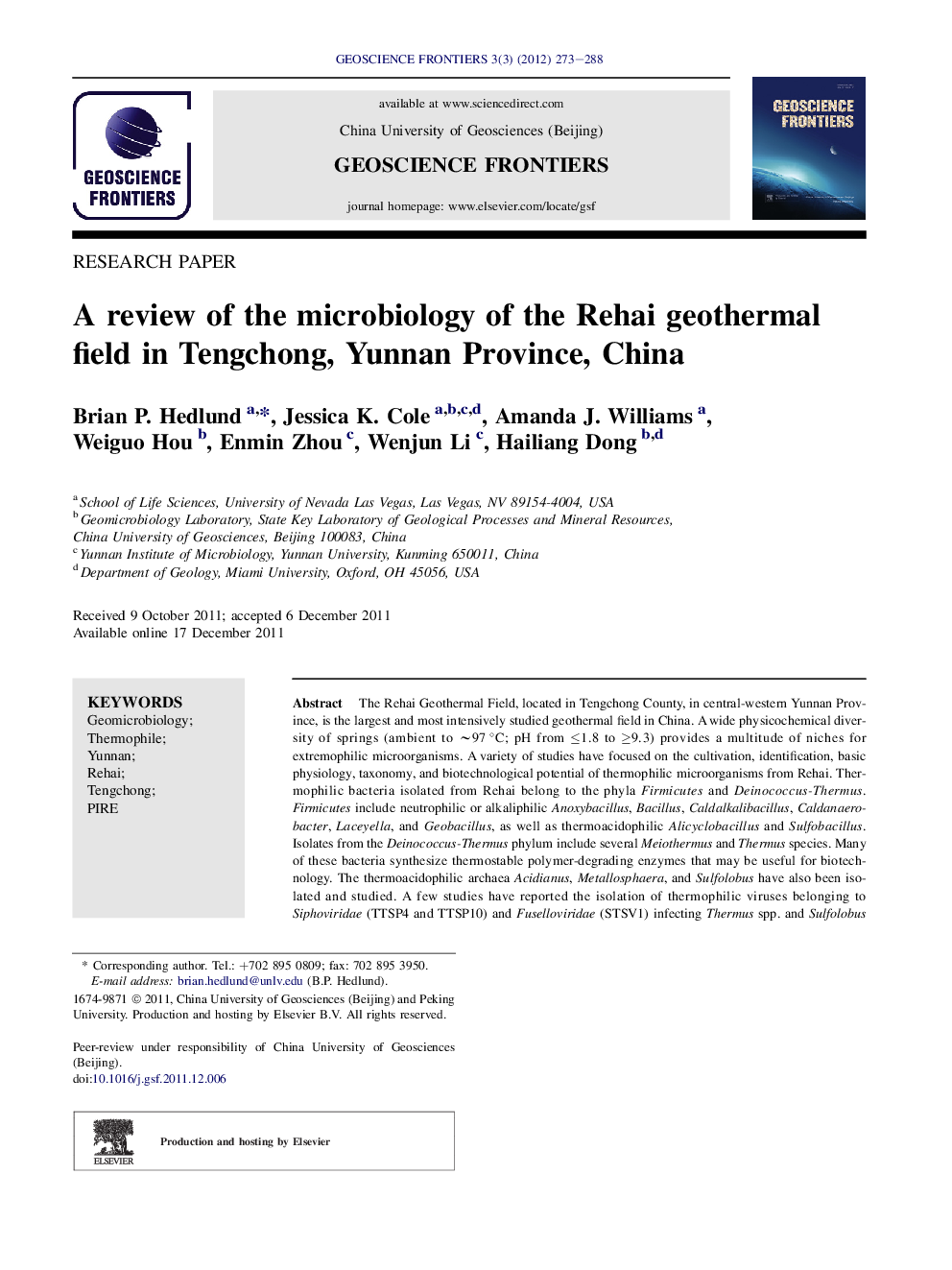| کد مقاله | کد نشریه | سال انتشار | مقاله انگلیسی | نسخه تمام متن |
|---|---|---|---|---|
| 4681821 | 1348876 | 2012 | 16 صفحه PDF | دانلود رایگان |

The Rehai Geothermal Field, located in Tengchong County, in central-western Yunnan Province, is the largest and most intensively studied geothermal field in China. A wide physicochemical diversity of springs (ambient to ∼97 °C; pH from ≤1.8 to ≥9.3) provides a multitude of niches for extremophilic microorganisms. A variety of studies have focused on the cultivation, identification, basic physiology, taxonomy, and biotechnological potential of thermophilic microorganisms from Rehai. Thermophilic bacteria isolated from Rehai belong to the phyla Firmicutes and Deinococcus-Thermus. Firmicutes include neutrophilic or alkaliphilic Anoxybacillus, Bacillus, Caldalkalibacillus, Caldanaerobacter, Laceyella, and Geobacillus, as well as thermoacidophilic Alicyclobacillus and Sulfobacillus. Isolates from the Deinococcus-Thermus phylum include several Meiothermus and Thermus species. Many of these bacteria synthesize thermostable polymer-degrading enzymes that may be useful for biotechnology. The thermoacidophilic archaea Acidianus, Metallosphaera, and Sulfolobus have also been isolated and studied. A few studies have reported the isolation of thermophilic viruses belonging to Siphoviridae (TTSP4 and TTSP10) and Fuselloviridae (STSV1) infecting Thermus spp. and Sulfolobus spp., respectively. More recently, cultivation-independent studies using 16S rRNA gene sequences, shotgun metagenomics, or “functional gene” sequences have revealed a much broader diversity of microorganisms than represented in culture. Studies of the gene and mRNA encoding the large subunit of the ammonia monooxygenase (amoA) of ammonia-oxidizing Archaea (AOA) and the tetraether lipid crenarchaeol, a potential biomarker for AOA, suggest a wide diversity, but possibly low abundance, of thermophilic AOA in Rehai. Finally, we introduce the Tengchong Partnerships in International Research and Education (PIRE) project, an international collaboration between Chinese and U.S. scientists with the goal of promoting international and interdisciplinary cooperation to gain a more holistic and global view of life in terrestrial geothermal springs.
Figure optionsDownload as PowerPoint slideHighlights
► The Rehai Geothermal Field, Yunnan Province, China, hosts thermophilic Bacteria, Archaea, and viruses.
► Cultivated Bacteria belong to Firmicutes and Deinococcus-Thermus phyla; Archaea belong to the Sulfolobales.
► The Tengchong PIRE project is an international team that studies the geobiology of Rehai.
Journal: Geoscience Frontiers - Volume 3, Issue 3, May 2012, Pages 273–288